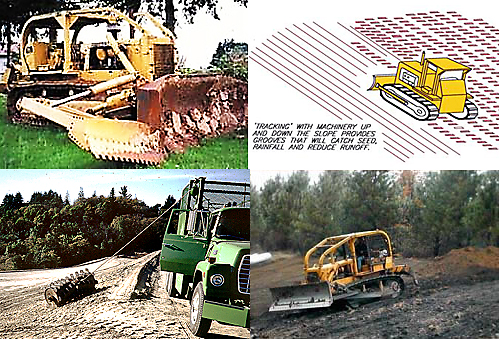Erosion Control Toolbox: Roughen Soil Surface
Introduction

Roughening soil is performed with earthwork equipment on finish-graded surfaces. Roughening consists of the following: (1) Trackwalk fill slopes by running tracked equipment perpendicular to slope contours; (2) Use a sheepsfoot roller on fill slopes by drawing it across the slope with a cable or tractor; and (3) Scarify cut slopes by drawing a serrated bulldozer blade or notched slope board across the slope parallel to the slope contours
When to Use This Treatment
- Roughen all slopes to receive permanent erosion control materials, unless otherwise directed in the special provision for the materials to be applied
- Slopes 2:1 (H:V) and flatter - roughen via trackwalking or scarification
- Slopes 1.5:1 (H:V) and flatter - roughen via sheepsfoot roller
Benefits
- Reduced stormwater runoff volume and velocity
- Reduces soil erosion and traps sediment
- Improved infiltration rate
- Improved soil water holding capacity
- Improved potential for vigorous long term vegetation coverage
Limitations
- May increase the cost of earthwork activities
- Requires site accessibility by earthwork equipment
- May not be practical for sandy and/or rocky soils
- Excessive soil compaction from heavy equipment should be avoided
Standard Special Provisions
- SSP 19-2.03G Roughen Soil clauses
- Caltrans Highway Design Manual Topic 110.2(2)(b) (PDF) recommends slope roughening techniques such as stepped slopes, trackwalking, scarification, and sheeps foot rolling to minimize erosion and promote plant growth. See the Stepped Slope webpage for detailed information on stepped slopes
References
- "Roadside Revegetation: An Integrated Approach to Establishing Native Plants and Pollinator Habitat"
- Comply with the guidance for Slope Roughening/Terracing/Rounding/Stepping provided in Appendix A of the Caltrans Storm Water Quality Handbooks Project Planning and Design Guide. (PDF)
Updated: November 28, 2018

